In the face of rising unemployment in Africa, governments, the private and development sectors are putting in a lot of effort to boost entrepreneurship through capacity building. At the heart of these initiatives is women’s entrepreneurship development. There is a good rationale for investing in women as they invest more in their families and communities. Thus, the return on investment can be great, including realising the Africa Agenda 2063 and global Sustainable Development Goals.

Graça Machel Trust Archives: Korkor Cudjoe
A few weeks ago, an associate of a global development organisation interviewed me on: ‘what is working and not working in women entrepreneurship capacity building. This topic is particularly close to my heart as the Project Lead for the Graça Machel Trust Women Creating Wealth (WCW) initiative. WCW is ‘a pan African movement that inspires, equips and empowers female entrepreneurs to transform their businesses from income to wealth-generating enterprises’. We launched the programme in 2016 and now have 430 alumni from Malawi, Zambia, Tanzania and South Africa.
A little about myself – I came into the development sector 20 years having run my businesses for 15 years. I have on various initiatives, including with TechnoServe and the Goldman Sachs 10000 Women. As such, I have a first-hand understanding of some of the challenges women face in business, and key among them is women often do not think big enough when they start businesses.
As part of our research, including the Graça Machel Trust Women Creating Wealth Publication, we looked at case studies of 60 women entrepreneurs across the continent, and we were able to confirm three significant constraints faced by African women entrepreneurs include:
- a lack of confidence, financial and business management skills,
- limited ability to tap into support services, including business networks, coaching, mentoring; and,
- poor information and preparation to access markets and finance.
We recognise that structural barriers (such as access to finance) are generally beyond an individual’s control. Still, well-designed capacity-building interventions, including coaching, mentoring networks and peer support, can make a substantial difference in building women entrepreneurs’ resilience and confidence to get what they need to succeed.
There are several reasons why the question of ‘what’s working and not working?’ arises; firstly, there is a lot on offer, and there is the expectation that we should have cracked the challenge of growing businesses after all the efforts driven in the sector. Second, we note that entrepreneurs move from one support initiative to the other, so we wonder how to serve them better to use the knowledge they acquire to grow steadily instead of “programme hopping”. Third, what is a reasonable percentage rate of success for any cohort that can nurture sustained growth? Finally, what does ‘lasting’ change look like if entrepreneurs show remarkable post-intervention results? For this, it’s worth bearing in mind that the Small Business Administration (SMA) research statistics show that 21.5% of start-ups fail in the first year, 30% in the second year, 50% in the fifth year, and 70% in their 10th year. It is important to note that entrepreneurs can convert the lessons learnt from failed businesses into new businesses, and all is never lost.
Addressing capacity gaps
We know capacity-building matters and can make a lot of difference in moving the micro and small business forward? We see evidence of remarkable change in before and after impact analysis and testimonies. We also see a shift in behaviour and attitude as witnessed by employees, partners and loved ones.
Skills gaps are fundamental, and a demand-driven and well-designed capacity building programme can be very impactful in strengthening competencies. For the young entrepreneurs, it is worth taking time to do a thorough diagnostics with them on their stage of business and related knowledge gaps and help them plan their capacity development needs accordingly. There are also many challenges, including perseverance in applying the new knowledge in the face of competitive markets; balancing cash flow; leading employees and managing customers; the ‘marathon’ of raising finance, and, for the female entrepreneurs, all the while taking care of domestic affairs and demands. We see thriving entrepreneurs who work as collectives or communities – they form strong bonds for shared information, resources, linkages and mentorship. We see a lean in for peer support and a space to let off steam during the trying periods, and a regular dose of inspiration is essential to stay afloat.
Sustaining growth for those significantly impacted
Regarding lasting change and sustaining growth, some noted variables that determine entrepreneurs who will show significant impact include selection, but we don’t always get this right. Further, motivation; need and life circumstance, stage of business, aptitude and experience, hunger for change/growth of the entrepreneur. The design, quality of delivery and duration of support matter too.
Well-structured programmes can impact at least 80% of the cohorts, and notable change is often in the top 20% – the real growth-oriented entrepreneurs. This 20% is our golden opportunity to intensify our support in the immediate term to accelerate impact through recognising them and connecting them to additional resources such as coaching, technical advisory and support, including more focused attention and handholding to facilitate access to finance. The current industry record of successful funding applications is only 5%. Thus, there appears to be more money than entrepreneurs to match. Partnership with investors and financial institutions is critical to quickly pick up the more ready 20% of growth-oriented entrepreneurs and work closely with them to address their immediate challenges, and better prepare them for funding. We must recognise this enabling partnership and take lessons to scale the associated successes.
It is also essential to explore some unintended consequences of our development initiatives. For example, are we creating a dependency in the market with the ‘free’ or heavily subsidised training initiatives? Given the precarious nature and uncertainty of markets, entrepreneurs can also look to get ‘lucky’ and sometimes apply for intervention hoping to find that silver bullet. And depending on the organisation, the expectation can significantly escalate to this training will open more doors, especially to funding. While this is the goal, we cannot miss the need to develop a strong business case and growth model.
In managing our expectations of what is required to sustain impact and growth, we need to factor in that life happens, and circumstances can set entrepreneurs back from time to time.
An essential fact for many African women entrepreneurs is they often carry additional responsibilities such as parenting and domestic burdens. As such, we need to move from short, eventful programmes to more sustained interventions that consider and accommodate the trials and tribulations of these additional responsibilities. There is always the looming self-doubt, imposter syndrome, and slow recovery when the entrepreneurs experience setbacks. Building a value-generating and supportive business community is critical and allows women to navigate the challenging entrepreneurship journey. The business community becomes a home of like-minded people who share common challenges and aspirations and creates a nurturing platform where entrepreneurs convene to encourage and inspire good practice so they can recover quickly from setbacks. We have observed that once the entrepreneur gets a handle on succeeding, there is no holding back, especially if they surround themselves with motivated peers and role models. They continue to gain inspiration and enthusiasm, and when they come across hurdles, they don’t lose faith for too long. They find what they need and the motivation to move forward. Therefore, the business community can become an empowering platform for ongoing live masterclasses as repetition is vital in learning circles, where entrepreneurs look for inspiration and accountability partners to drive action.
So, there is no easy answer regarding what is working and what is not working. Still, the holistic nature of the programme will help identify resilient and growth-oriented entrepreneurs. And a value-generation business community will help in incremental growth for the majority. And further, a well-connected ecosystem where we see entrepreneurship capacity building as a relay with investors and financial institutions is necessary, especially for women entrepreneurs to level the playing field through gender lens investing. It is pivotal to foster partnership and build a relationship with investors who have the knack for making money and can be great mentors to emerging entrepreneurs. I can identify with entrepreneurs who dream and hope that there will be a miraculous breakthrough around the corner. However, many mature and successful entrepreneurs will attest there is great pay-off in taking time to build a big vision, set goals, put measurable plans in place, review progress regularly, network and keep connected with those who support you. Finally, like in all challenging endeavours, we need to find daily inspiration to energise, stay optimistic and build resilience to sustain growth and impact.



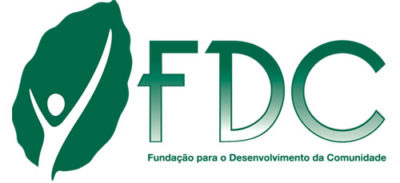

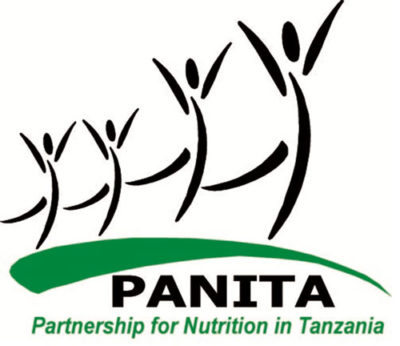
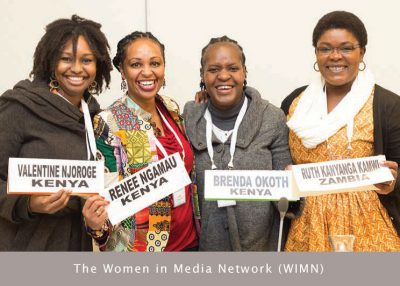
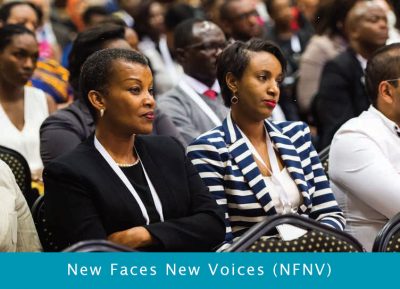
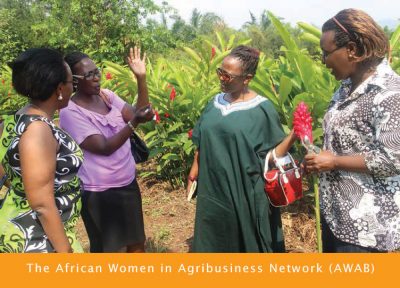
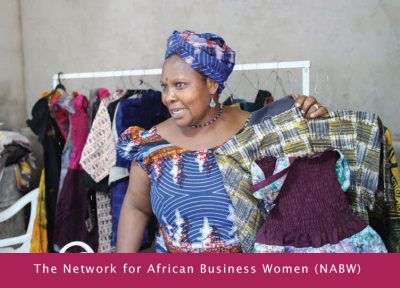
 The Trust supports and mobilises civil society networks on issues of ending child marriage, ending violence against children, ending female genital mutilation and promoting children’s rights, to carry out advocacy and action across Africa. Special focus is placed on Malawi, Mozambique, Tanzania and Zambia where child marriage continues to be a problem largely driven by poverty, gender inequality, harmful traditional practices, conflict, low levels of literacy, limited opportunities for girls and weak or non-existent protective and preventive legal frameworks.
The Trust supports and mobilises civil society networks on issues of ending child marriage, ending violence against children, ending female genital mutilation and promoting children’s rights, to carry out advocacy and action across Africa. Special focus is placed on Malawi, Mozambique, Tanzania and Zambia where child marriage continues to be a problem largely driven by poverty, gender inequality, harmful traditional practices, conflict, low levels of literacy, limited opportunities for girls and weak or non-existent protective and preventive legal frameworks.




 Education is a fundamental right for all children, which is also a vehicle for social, economic and political transformation in communities, countries and the African continent at large. Recent studies indicate a lack of progress in some of the critical commitments aimed at improving education quality, access, retention and achievement, particularly for girls. In most African countries, girls may face barriers to learning, especially when they reach post-primary levels of education. By implementing multi-dimensional approaches to education which includes core education, personal development, life skills and economic competencies, the Trust partners with funding partners, governments, civil societies and the private sector to improve education access.
Education is a fundamental right for all children, which is also a vehicle for social, economic and political transformation in communities, countries and the African continent at large. Recent studies indicate a lack of progress in some of the critical commitments aimed at improving education quality, access, retention and achievement, particularly for girls. In most African countries, girls may face barriers to learning, especially when they reach post-primary levels of education. By implementing multi-dimensional approaches to education which includes core education, personal development, life skills and economic competencies, the Trust partners with funding partners, governments, civil societies and the private sector to improve education access.

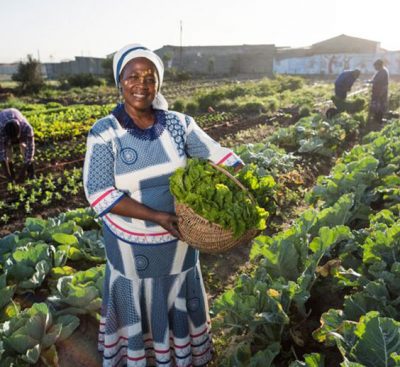 The Nutrition and Reproductive, Maternal, New-born, Child and Adolescent Health and Nutrition, (RMNCAH+N) of the Children’s Rights and Development Programme aims at promoting the Global Strategy for women, children and adolescents’ health within the Sustainable Development Goals (SDG) agenda. The strategy emphasises on the importance of effective country leadership as a common factor across countries making progress in improving the health of women, children and adolescents.
The Nutrition and Reproductive, Maternal, New-born, Child and Adolescent Health and Nutrition, (RMNCAH+N) of the Children’s Rights and Development Programme aims at promoting the Global Strategy for women, children and adolescents’ health within the Sustainable Development Goals (SDG) agenda. The strategy emphasises on the importance of effective country leadership as a common factor across countries making progress in improving the health of women, children and adolescents. Through its Early Childhood Development (ECD) plan, The Trust will seek to put into action the new science and evidence Report that was presented by Lancet Series on Good and early development – the right of every child. This will be achieved by mobilising like-minded partners to contribute in the new science and evidence to reach all young children with ECD. The Trust’s goal is to be a catalyst for doing things differently, in particular, to rid fragmentation and lack of coordination across ECD sectors. In response to evidence showing the importance of political will in turning the tide against the current poor access and quality of ECD. Even before conception, starting with a mother’s health and social economic conditions, the early years of a child’s life form a fundamental foundation that determines whether a child will survive and thrive optimally.
Through its Early Childhood Development (ECD) plan, The Trust will seek to put into action the new science and evidence Report that was presented by Lancet Series on Good and early development – the right of every child. This will be achieved by mobilising like-minded partners to contribute in the new science and evidence to reach all young children with ECD. The Trust’s goal is to be a catalyst for doing things differently, in particular, to rid fragmentation and lack of coordination across ECD sectors. In response to evidence showing the importance of political will in turning the tide against the current poor access and quality of ECD. Even before conception, starting with a mother’s health and social economic conditions, the early years of a child’s life form a fundamental foundation that determines whether a child will survive and thrive optimally.